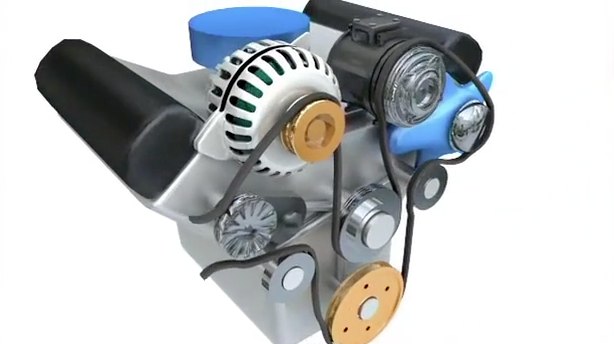
You know that long belt that snakes around the front of your engine? It's called the
serpentine belt. The belt is driven by the engine as it turns. It powers your alternator, air conditioning compressor and power steering pump. On some vehicles it also runs the water pump, radiator fan and power brakes. It sounds like a lot of important stuff, doesn't it? If your serpentine belt were to break, your battery would die in a few miles. If it runs your fan or your water pump, your engine could overheat and steering and braking could be more difficult. Obviously, the best thing is to replace your serpentine belt before it breaks. Your owners manual recommends regular serpentine belt inspections. Just ask your Elite Auto Repair Service Advisor. You may have been told to look for cracks in your belt, to see if it needs to be replaced. Of course, cracks are still a concern, but modern belt material doesn't crack as often as old belts did. In fact, worn belts often have no visible signs of wear at all. What we look for these days is wear in the grooves where the belt rides over the pulleys. Your technician has a special little tool that measures the depth of the grooves in the belt, to see if it needs replacing. A worn belt can slip or be misaligned, putting undue stress on the accessories it runs. It's also important for the belt to be tight, so there's a tensioner pulley on your engine that puts pressure on your belt to keep it at the right tension. If the belt is too loose, it will slip, causing performance problems with the accessories. The spring on the tensioner wears out over time, so we check the tensioner pulley when we replace the serpentine belt. If it's worn we just replace the tensioner pulley along with the belt. Replacing your serpentine belt and belt tensioner when needed will keep you from unexpected repairs and breakdowns. Is it time to have your belt inspected?
Call us today: Book An Appointment
Book An Appointment